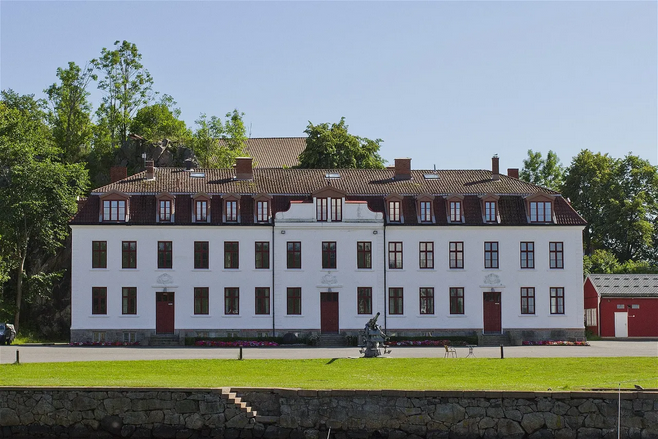Oscarsborg Fortress:
Norway’s Historic Stronghold and the Legacy of Blücher
Rising majestically from the waters of the Oslofjord, just outside the town of Drøbak, Oscarsborg Fortress is one of Norway’s most iconic and historically significant landmarks. More than just a scenic destination, Oscarsborg embodies centuries of military strategy, heroic defense, and cultural heritage. Its story combines breathtaking landscapes, powerful military architecture, and tales of courage that continue to resonate today.
Origins and Purpose: Guarding Oslo
The fortress was initially constructed to protect the seaward approach to Oslo, Norway’s capital. Its location on two small islands, Nordre and Søndre Kaholmen, allowed it to control maritime traffic through the fjord, a strategic chokepoint for both defense and trade. Over time, Oscarsborg developed into a formidable coastal stronghold, with its massive cannons, hidden torpedo battery, fire-control installations, and network of underground tunnels. The fortress was designed not just for defense, but to act as a deterrent against any potential invasion. Its imposing walls, strategic placement, and sophisticated artillery made it one of the most advanced coastal defenses in Norway.
The Heroic Stand of 9 April 1940
Oscarsborg’s most famous moment came during the early hours of 9 April 1940, at the outbreak of the German invasion of Norway in World War II. As German forces attempted to sail the cruiser Blücher into Oslo, the fortress’s defenders launched a coordinated attack. Using both its cannons and secret torpedo battery, Oscarsborg successfully sank the Blücher.
This decisive action delayed the German advance, allowing Norwegian government officials, the royal family, and critical personnel to evacuate the capital safely. The sinking of the Blücher has since become emblematic of Norwegian resilience and strategic ingenuity. It’s a story of courage under pressure, and the fortress itself stands as a monument to that historic moment.
Oscarsborg Through the 20th Century
After its heroic role in 1940, Oscarsborg remained an active military installation for decades. It continued to serve as a training site and coastal defense point during the Cold War, adapting its facilities to modern military needs while preserving the original fortifications. By 2002, the fortress was decommissioned from active military use, transitioning fully into a cultural and historical site.
Since 2004, Oscarsborg has welcomed the public, offering a unique combination of education, exploration, and leisure. Visitors can now wander the same grounds that once witnessed critical moments in Norwegian history, while also enjoying the natural beauty and cultural offerings of the island.



Oscarsborg on the Big Screen: Blücher
The legendary sinking of the Blücher has now been immortalized in the new feature film Blücher. This cinematic retelling captures the tension, strategy, and heroism of April 1940, offering audiences a gripping perspective on the fortress’s most famous moment. By dramatizing the human stories behind the historic events, Blücher brings Oscarsborg’s history to a wider audience, connecting viewers with Norway’s wartime past in a compelling and emotional way. For visitors planning a trip to the fortress, watching the film can provide additional context and a deeper appreciation of what happened that fateful morning.